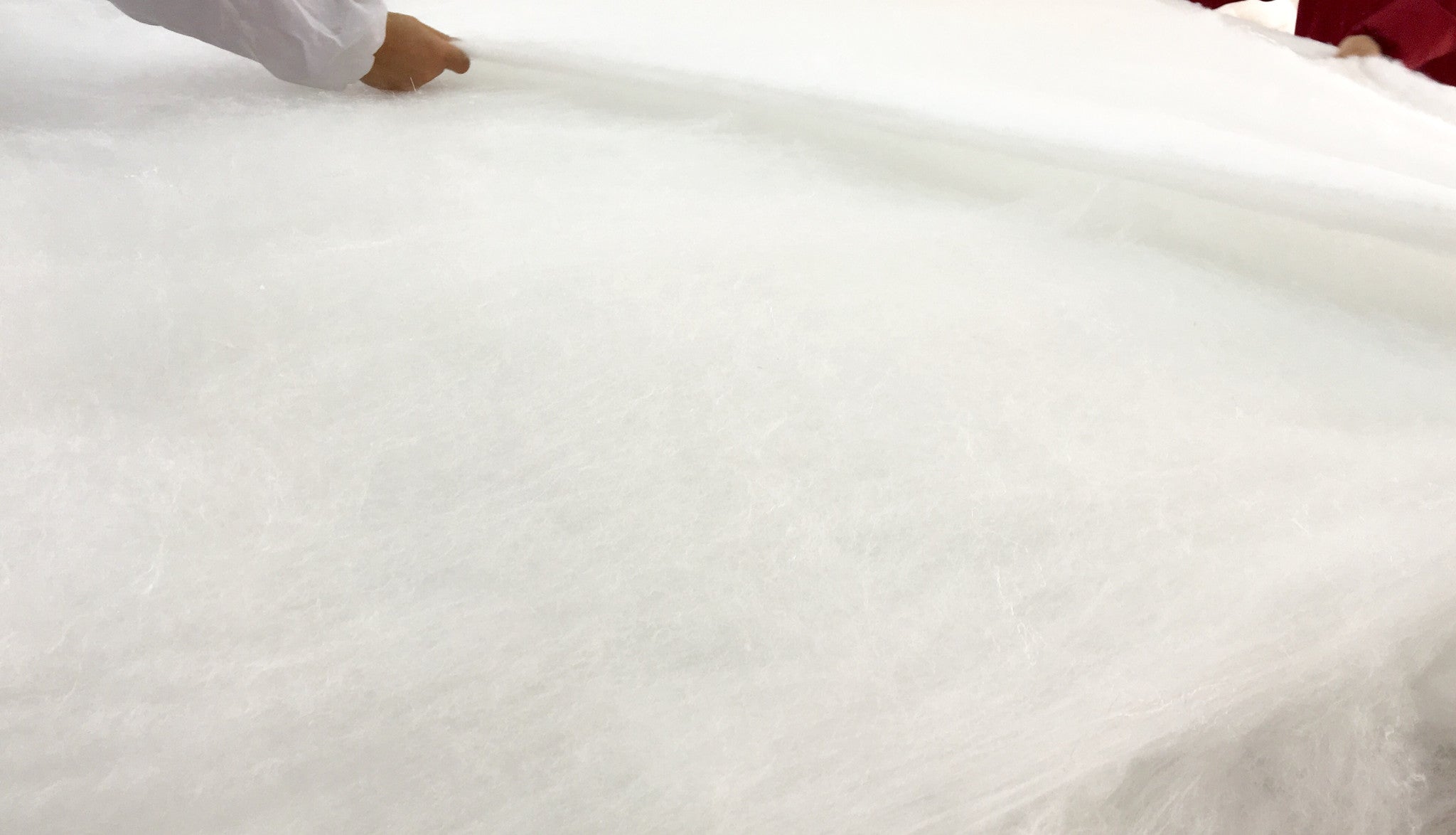Why it matters?
Why does it matter to care about different grades of Mulberry silk? Just like jewelry, different grades of silk produce different types of products. People purchase silk comforter for its even warmth, lightness, breathability, softness and durability. Different grades of silk provide different quality of benefits of silk comforters. There are three main grades of silk, categorized as A, B, and C.
Grade A Silk is top grade silk that can be unraveled without silk floss breaking. When stretched out, a single silk floss can be as long as a mile. The cocoon itself has a pearly white color with a healthy sheen to it. When a comforter is made with only grade A silk, the workers only stitch the silk floss filling to the edge of the comforter to hold the silk floss filling in place. Because the silk floss is so long, there’s no stitching required anywhere to keep them in place. This means the comforter is simply two layers of fabrics with a cloudy silk filling in the middle with even thickness all around.
The grade A silk also has very little clumps of silk. Over time, clumps of silk will get clumpier and it will create air pockets in the nearby area. When it gets rubbed over and over against cover fabrics, it will also get clumpier. This will greatly diminish the even warmness of a silk comforter. Because silk comforter drapes around you, any air pockets will feel like uncomfortable cold pockets. With Grade A silk containing minimal clumps, your silk comforter will be able to provide even warm all around you. Also without clumps, silk comforter can maintain its initial silk floss batting structure better and thus enhance the longevity of the comforter. A good silk comforter can last 10+ years.
Another tell-tale sign of a grade A silk is its touch. It feels soft and light. This enhances the breathability of your silk comforter and you feel like as if you are sleeping under a cloud. It will also look pearly white without any added manufacturing process. If you take a good sniff, you can also smell the sweetish smell of silk, a calming sensation
Grade B silk are cocoons that can only generate short floss instead of long floss. Something happened to the development process of the cocoon. grade B silk may look similar in color compared with Grade A but it definitely contains clumps. Clumps over time as we discussed will create unevenness and air pockets in your silk comforters. Because of its shorter floss, stitching is required throughout the comforter. This diminishes the comfort of a silk comforter. By touch, grade B silk feels rough compared with grade A and lacks a natural sheen.
Grade C silk is actually the most inner layer of silk that is closest to the cocoon. After workers remove either grade A or B silk, what is left is grade C silk. It looks yellow and often has brown dots because it contains oil from the silk worm. It is very rough to touch and feels cotton like. It doesn’t contain any natural sheen and the floss is very short. When a silk comforter is made with grade C silk, stitching is definitely required all over the comforter to keep the short floss in place. Breathability and lightness of the comforter are greatly compromised because of its cotton-like lumpy feel. If the color looks white, that means it is actually bleached which damages the structure of the silk and making it even rougher.
There are actually grade AAA, grade AA, grade BBB, grade BB, grade CCC and grade CC. These grades of silk are standardized within silk manufacturing industry in China and there are quality, inspection, and testing bureau to help consumer verify the grades. You may wonder why people even use grade C for silk comforters? The answer is simply demand. There’s limited production of silk floss per year and with high demand from China and around the world, many manufacturers uses grade C silk to fill orders. At Mari Ann, we only use Grade AAA Mulberry silk, which is only the top 3-5% of mulberry silk production. It is the finest silk available in the world.


